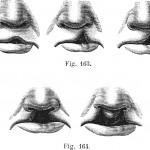
Cleft lip is one of the most common craniofacial birth defects and requires early correction. It can be carried out during the neonatal period or earlier although timing depends on the type and severity of the deformity, the child’s health and other factors. Pain postoperatively can be a problem and result in psychological, cardiorespiratory, and metabolic issues.
The aim of this Cochrane Review was to assess the effects of infraorbital nerve block for postoperative pain following cleft lip repair in children.
Methods
Searches were conducted in the Cochrane Central Register of Controlled Trials (CENTRAL) , Medline, Embase, LILACS, the metaRegister of Controlled Trials ClinicalTrials.gov and the World Health Organization International Clinical Trials Registry Platform database.
Randomised, published or unpublished, controlled clinical studies that tested perioperative infraorbital nerve block for cleft lip repair in children compared with other types of analgesia procedures, no intervention, or placebo were considered. Two reviewers independently screened studies, abstracted data and assessed risk of bias. Standard Cochrane analytical methods were used. The primary outcomes were pain, duration of postoperative anaesthesia and adverse events.
Results
- 8 studies involving 353 children were included.
- Overall, the included studies were at low or unclear risk of bias.
- Meta-analysis was difficult as the studies recorded different types of interventions (lignocaine or bupivacaine), observation times, measurements and outcome descriptors.
- Comparing infraorbital nerve block versus placebo, there was a large effect in mean postoperative pain scores favouring the intervention group (standardised mean difference (SMD) -3.54, 95% confidence interval (CI) -6.13 to -0.95; very low-quality evidence; 3 studies; 120 children).
- Only one study reported the duration of analgesia (in hours)with a difference favouring the intervention group (mean difference (MD) 8.26 hours, 95% CI 5.41 to 11.11; very low- quality evidence) and less supplemental analgesic requirements in the intervention group (risk ratio (RR) 0.05, 95% CI 0.01 to 0.18; low-quality evidence).
- In the comparison of infraorbital nerve block versus intravenous analgesia, there was a difference favouring the intervention group in mean postoperative pain scores (SMD -1.50, 95% CI -2.40 to -0.60; very low-quality evidence; 2 studies; 107 children) and in the time to feeding (MD -9.45 minutes, 95% CI -17.37 to -1.53; moderate-quality evidence; 2 studies; 128 children).
- No significant adverse events (third primary outcome) were associated with the intervention, although three studies did not report this outcome. Five out of eight studies found no unwanted side effects after the nerve blocks.
Conclusions
The authors concluded:-
There is low- to very low-quality evidence that infraorbital nerve block with lignocaine or bupivacaine may reduce postoperative pain more than placebo and intravenous analgesia in children undergoing cleft lip repair. Further studies with larger samples are needed. Future studies should standardise the observation time and the instruments used to measure outcomes, and stratify children by age group.
Comments
While the review has been well conducted and only a small number of small studies were identified from an extensive search strategy. The interventions, patients ages, duration of follow up and outcome measure varied making analysis difficult. The included studies were also considered to be of low to moderate methodological quality and the overall quality of evidence was considered very low using the GRADE approach. So while the limited available evidence suggests that there may be some benefit from using infraorbital nerve block further high quality studies are required.
Links
Primary paper
Feriani G, Hatanaka E, Torloni MR, da Silva EMK. Infraorbital nerve block for postoperative pain following cleft lip repair in children. Cochrane Database of Systematic Reviews 2016, Issue 4. Art. No.: CD011131. DOI: 10.1002/14651858.CD011131.pub2.

Infraorbital nerve block for postop pain following cleft lip repair in children https://t.co/nflWKZnE92
Low-quality evidence that infraorbital nerve block may reduce postop pain in children undergoing cleft lip repair https://t.co/nflWKZ63hu
Does infraorbital nerve block reduce postop pain in children undergoing cleft lip repair? https://t.co/nflWKZ63hu
Evidence that infraorbital nerve block reduces postop pain in children undergoing cleft lip repair is low quality https://t.co/nflWKZnE92
Don’t miss- Infraorbital nerve block for postop pain following cleft lip repair in children https://t.co/nflWKZ63hu
RT @TheDentalElf: Infraorbital nerve block for postop pain following cleft lip repair in children https://t.co/1qCjJagFHP via @sharethis
If your child has a cleft lip, it’s important to have it repaired early. Before you do, however, it is important to understand what your options are. Surgeries do have risks associated with them, and it’s important to minimize those risks.